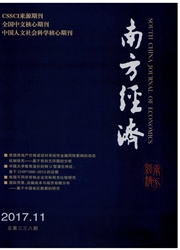

 中文摘要:
中文摘要:
文章基于CFPS数据,将居民家庭资产区分为流动性较高的资产和流动性较低的资产两种类型,把不同类型资产的变现成本引入到家庭消费决策的分析中,构建了一个双资产消费决策模型,并实证研究了家庭资产结构对消费倾向的影响。整体来看,家庭流动性较高的资产占比提升有助于提高家庭的平均消费倾向,流动性较高的资产占比每增加1个百点,家庭的消费倾向增加0.11个百分点;随着家庭流动性较高的资产占比的增加,其对消费的促进作用也会显著增加。通过提高资产整体的流动性,降低金融服务费率,有助于从微观视角上扩大居民的消费需求。
 英文摘要:
英文摘要:
In this paper,we divide household assets into two types: high liquid assets and lowliquid assets and construct a simple double-assets consumption decision model considering the transaction cost of different assets. Then we study the effect of household asset structure on the household propensity to consume in China empirically based on CFPS data. We find that the rise of the proportion of high liquid asset is helpful to improve the household APC( Average Propensity to Consume). If the proportion of high liquid asset rises by 1 percentage,the household APC would increase by 0. 11 percentages. When the proportion of high liquid asset increases,its effect on the household APC also increases. In conclusion,it's helpful to expand private consumption demand on micro perspective by increasing the liquidity of total household assets and reducing the financial service rates.
 同期刊论文项目
同期刊论文项目
 同项目期刊论文
同项目期刊论文
 期刊信息
期刊信息
